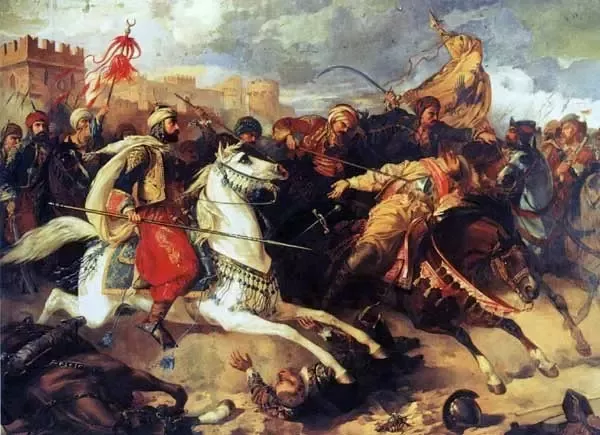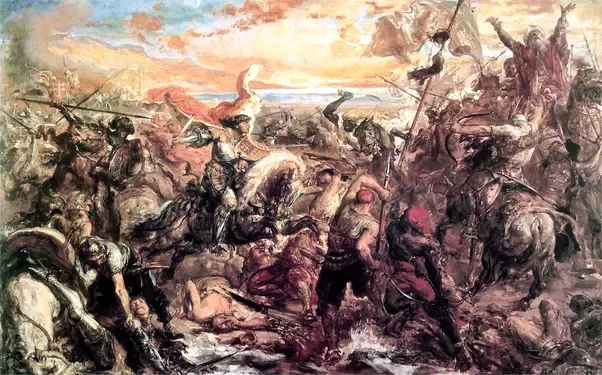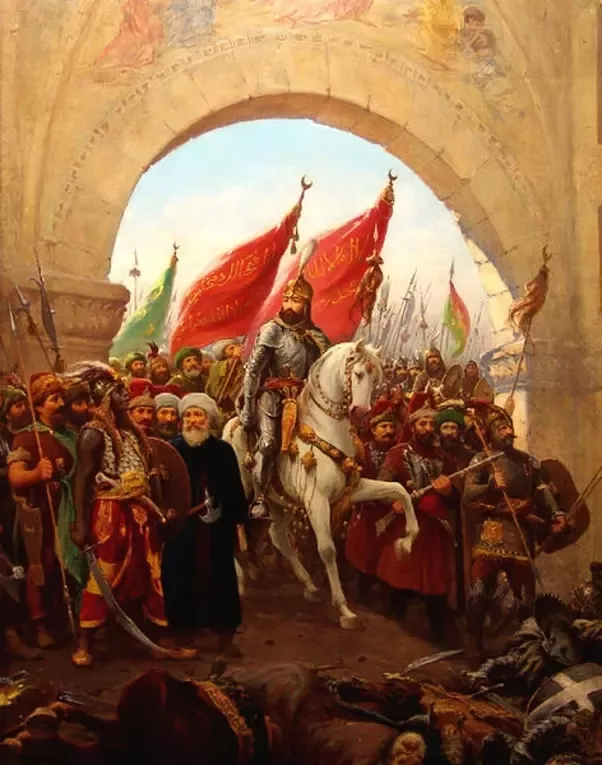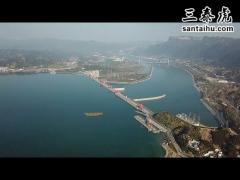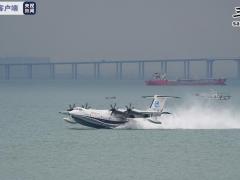哪一场战役改变了历史进程?(单次战役而非一系列) [美国媒体]
quora网友:阿尔-卡迪西亚会战——公元636年,入侵的阿拉伯/穆斯林军队与伊朗的萨珊帝国进行了战斗。阿拉伯半岛在先知穆罕默德的领导下统一后,阿拉伯人在他的继任者的领导下开始向北寻求征服。这使他们与当时的两个大帝国伊朗和拜占庭罗马发生冲突......
Which single major battle changed the course of history? (Single battles not campaigns)
哪一场战役改变了历史进程?(单次战役而非一系列)
Reza Shaeri, Attorney
The Battle of Qādisiyyah. Fought between the invading Arab/Muslim forces, and the Sassanian Empire of Iran, in 636.
After the Arabian peninsula had been united under the Prophet Mohammad, the Arabs, under his successors began to look north for conquest. This brought them into conflict with the two great empires of the day, Iran and Byzantine Rome.
The Iranians had managed to keep the marauding Arabs at bay, but this 4 day battle, which took place close to what is now Karbala, in southern Iraq, was a horrendous loss. The legendary general and commander in chief, Rostam Farrokhzād, was slain. The Imperial standard, the Derafsh Kaviani, was captured, destroyed, and its priceless jewels sold in Mecca. The badly demoralized army could not defend Iraq, and soon the magnificent capital city, Ctesiphon, fell to the Arabs. The Last Emperor, Yazdegerd III, fled east to prepare a counterattack, but was murdered by rivals.
The Fall of Iran
The Empire crumbled, and no effective resistance could be mounted against the ethnic and cultural genocide that followed. Iranians were crushed, never again to rise their superpower status. A seething anger at the Arabs was burned in their hearts. Of all the peoples that the Muslims conquered, none would fight for their independent identity like the Iranians. And none kept their own language against the overwhelming tide of Arabic, as they did with Persian. The Arabs, in turn, took over the vast Iranian empire and its resources, and used it for their continuing conquests of much of Eurasia. But they never lost their suspicion and distrust of the Persians, who repeatedly rose up in revolt.
But it would go beyond the racial tension and cultural animosity. In many ways, the ethnic dimension of the Shiite-Sunni divide was born with this battle. The Caliph Umar, who held power during the invasion, and is revered as "Rightly Guided" among the Sunni, became a hated figure in Iran. Meanwhile, the Iranians who assassinated him, Hormuzan and Pirouz Nahavandi, are celebrated to this day by Iranians, much to the consternation of other Muslims.
While shi'ism as a distinct religious sect would not emerge for several centuries, the Iranians, forced to convert to Islam, and denied power in their own land, began to identify with the persecution of the family of Ali, the Prophet's cousin and son-in-law. A belief would spread that Yazdegerd's daughter, Sharhrbano, who was taken as slave after the fall of the Empire, was freed by Ali and wedded to his son Hussein. This make his son, and all the Imamah that followed, the progeny of the Iranian Royal House. The story is almost certainly apocryphal, but it shows the beginnings of the syncretic intertwining of beliefs that would emerge as Iranian Shia-ism.
In time, it would be Persian forces who overthrew the Ummaayad dynasty, and intalled the Abbasids in their place. The new capital, Baghdad, was built on the outskirts of the destroyed Ctesiphon. While the Abbasids repeatedly broke their promises to, and betrayed the Imams, the government was dominated by Persians. Some have even called it the 4th Iranian Empire.
Aftermath
The Battle remains very much a raw nerve well into our time. When Saddam Hussein invaded Iran in 1980, he took to calling himself the Sardar (Commander) of Qadisiyah. He vowed to repeat the Arab victory, and "reconquer Persia." As one can imagine, this aroused intense nationalist anger in Iran, and drove the massive defense mobilization. He of course failed to conquer Iran, but that didn't stop him from building this infamous victory arch, called the Swords of Qādisīyah.
The hands were reportedly modeled on his own, and at each base, were scattered the helmets of 5,000 fallen Iranian soldiers. After the fall of Saddam, Shia led governments have attempted to destroy the monument, but that has met with stiff resistance from other Iraqi nationalists.
阿尔-卡迪西亚会战
公元636年,入侵的阿拉伯/穆斯林军队与伊朗的萨珊帝国进行了战斗。
阿拉伯半岛在先知穆罕默德的领导下统一后,阿拉伯人在他的继任者的领导下开始向北寻求征服。这使他们与当时的两个大帝国伊朗和拜占庭罗马发生冲突。
伊朗人设法阻止了阿拉伯人的肆虐,但这次在伊拉克南部接近现在的卡尔巴拉的为期四天的战斗是一场可怕的损失。传奇将军兼总司令罗斯塔姆·法罗克兹·科德被杀。帝国的象征——德拉夫什·卡维亚尼被抢夺、摧毁并在麦加出售了其无价的珠宝。士气低落的军队无法保卫伊拉克,很快,宏伟的首都---泰西封,落到了阿拉伯人手里。萨珊帝国最后的一位皇帝,亚兹迪格德三世,逃往东方准备反击,但被对手杀害。
伊朗的沦陷
帝国崩溃了,对随后发生的种族和文化种族灭绝没有任何有效的抵抗。伊朗人被压垮了,再也没有恢复过他们超级大国的地位。对阿拉伯人的满腔怒火在他们心中燃烧。在穆斯林征服的所有民族中,没有人会像伊朗人那样为自己的独立身份而战。没有一种语言像波斯语那样,保留自己的语言来抵御阿拉伯语的泛滥。反过来,阿拉伯人接管了庞大的伊朗帝国及其资源,并利用它继续征服欧亚大陆的大部分地区。但他们从未放下过对波斯人的猜疑和不信任,而波斯人也不断起义和反抗。
但它将超越种族紧张和文化仇恨。在许多方面,什叶派和逊尼派的种族分歧是在这场战争中诞生的。在入侵期间掌权并在逊尼派中被尊为“正确引导者” 的哈里发奥马尔在伊朗成了一个令人痛恨的人物。与此同时,暗杀他的伊朗人霍尔木赞和皮鲁兹·纳哈凡迪至今仍受到伊朗人的尊敬,这让其他穆斯林大为震惊。
虽然什叶派作为一个独特的宗教派别在几个世纪内不会出现,但那些被迫信仰伊斯兰教并在自己的土地上被剥夺了权力的伊朗人,开始认同先知表弟和女婿阿里的家族受到了迫害。一种关于亚兹迪格德三世的女儿——夏尔巴诺在帝国灭亡后被当作奴隶,后来被阿里释放,嫁给了他的儿子侯赛因的信念开始蔓延。这使得他的儿子,以及随之而来的所有伊玛玛,成为伊朗王室的后代。这个故事几乎可以肯定是虚构的,但它显示了伊朗什叶派信仰融合的开始。
最终,波斯力量推翻了乌玛亚德王朝,并将阿巴斯王朝安置在他们的位置。而新的首都,巴格达,建立在被摧毁的泰西封的郊区。当阿巴斯王朝一再违背承诺并背叛了伊玛目时,政府由波斯人主宰。有些人甚至称它为伊朗第四帝国。
后果
这场战斗在我们这个时代仍然是一根不可挑拨的神经。1980萨达姆·侯赛因入侵伊朗时,他开始称自己为卡迪西亚的沙达尔(指挥官)。他发誓要重申阿拉伯的胜利,并“重新征服波斯”。可以预见,这引起了伊朗激烈的民族主义愤怒,并驱动了大规模的国防动员。他当然没能征服伊朗,但这并没有阻止他建造这座臭名昭着的胜利拱门,这就是所谓的“QDISDISYYA之剑”。
据报道,这双手是仿照他自己手造的,每一个地基都散落着5000名阵亡的伊朗士兵的头盔。萨达姆倒台后,什叶派领导的政府试图摧毁这座纪念碑,但遭到了其他伊拉克民族主义者的强烈抵制。
Ravi Katragadda
I have a question Reza. Is there a specific reason why Persians (during this era) chose to do away with Zoroastrianism and convert to Islam despite their disagreements with the Arabs? What made them preserve their language but not their religion?
我有个问题,Reza。为什么波斯人(在这个时代)选择废除琐罗亚斯德教,改信伊斯兰教,尽管他们与阿拉伯人有分歧?有什么具体原因吗?是什么使他们保留自己的语言而不是他们的宗教?
Reza Shaeri
This would make a really good question to post!
Several factors. First, Zoroastrianism, had been around for some 1500 years, and by that point in the 7th Century, it had reached a kind of ebb. What had been an open, tolerant, and peaceful faith had become a closed minded, sclerotic one, that was being forced on people. From having little by way of clerical rules and authority, by the end of the Sassanian era, it had become dominated by a venal and corrupt priestly class. And worse, those priests were attached to the government, and Zoroastrianism became the official "state-religion," which it had never been in its original form. So war, taxes, oppression, and all the things that ordinary people hate about governments, were transfered to the faith. So as you can imagine, people were very much yearning for something new. A number of indigenous reformers tried to make change, only to be murdered by the kings and priests. And ideas from the outside, like Buddhism and Christianity did make a'lot of inroads, no matter how much the government tried to stop them. (I actually think if the Battle had gone the other way, Iran today could easily be Buddhist, or Nestorian Christian.)
So when Islam came, with its message of brotherhood and equality, it did appeal to a'lot of Iranians, as it would for millions and millions the world over. But still, Iranians, did not convert en mass for a very long time, it took many generations. And the Arabs did not really want them to covert, one because they didn't trust them, but mainly because they could extract higher taxes from non-Muslims. This higher tax, plus the many other discrimination and harassments forced on people, became intolerable. Some were killed, and some tried escape away, to India, among other places.
Others, starting with the rich and ambitious, who wanted political power, as Joseph mentions, began the stream of conversion that took over the country. But as I talked about in the answer, from the start, Islam in Iran took on distinct Persian characteristics. Kinda like, say, Catholicism combining Christianity with Roman traditions.
这是个很好地问题!
几个因素。首先,琐罗亚斯德教已经存在了大约1500年,到了第七世纪的那个时候,它已经达到了某种程度的衰退。曾经是开放的、宽容的、和平的信仰,已经成为正被强加在人们身上的一种封闭的思想,僵化的信念。从一开始的很少的教权主义和权威主义,到萨珊时代末期,它已经被一个贪得无厌的牧师阶级所统治。更糟糕的是,这些牧师都隶属于政府,琐罗亚斯德教成为官方的“国教”,这是它最初从来没有过的地位。因此,战争、税收、压迫以及普通人对政府的憎恨,都被转移到了信仰上。所以,正如你所想,人们非常渴望新事物。一些本土的改革者试图进行变革,结果被国王和牧师杀害。而来自外部的思想,如佛教和基督教,不管政府有多大的努力去阻止它们。还是取得了很大的进展。(实际上我认为如果这场战役的结果相反,今天的伊朗很有可能是佛教徒或者景教徒)。
因此,当伊斯兰教以其博爱和平等的面孔出现时,它确实吸引了一大批伊朗人,就像当时全世界的数百万人一样。但是伊朗人并没有在很长一段时间内进行大规模的改造,这花费了很多代人的时间。而阿拉伯人也并不是真的想让他们都该信伊斯兰教,一个原因是他们不信任伊朗人,但主要是因为他们可以从非穆斯林那里获得更高的税收。这个更高的税收,加上许多其他的歧视和骚扰,人民开始变得不堪忍受。一些人被杀,还有一些人试图逃到印度等地。而另一些富人和有野心的想要政治权力人,开始慢慢接管了这个国家宗教转变的潮流。
但正如我在回答中所说的,从一开始,伊朗的伊斯兰教就呈现出鲜明的波斯特色。有点像天主教,将基督教与罗马传统结合起来。
Omanshu Thapliyal, works at Purdue University
Battle of Vienna
TL;DR
Not only was it the largest cavalry battle in human history, but it marked an end to the Ottoman expansion into the Christendom of Europe.
King John III Sobieski blessing Polish attack on Turks in Battle of Vienna - Juliusz Kossak painting
Quoting my other answer, Omanshu Thapliyal's answer to What were the greatest cavalry forces in history?
This battle was the turning point in history after which "the Ottoman Turks ceased to be a menace to the Christian world". The Ottoman army consisted of about 300,000 men with elite Janissary and Sipahi units, while the defending forces consisted of 50,000-60,000 Germans, 24,000 in Viennese garrison and 15,000-20,000 Poles.
The Ottomans intended to take Vienna before the Polish relief forces, led by the king John III Sobieski himself (later called the Savior of Christendom by the Pope and "Lion of Lechistan" by the Ottoman belligerents themselves), arrived. The Ottomans attacked early at 4 a.m. The Polish infantry arrived in the afternoon and the hussars came into action at around 4 p.m. when the infantrymen cheered their arrival from the forest. At 6 p.m., Sobieski himself led the largest cavalry charge with 15,000 horses, spearheaded by 3,000 winged hussars.
Contemporary Turkish historian, Silahdar Findiklili Mehmed Agha (1658-1723), described the battle as an enormous defeat and failure for the Empire, the most disastrous one to have taken place since the foundation of the Ottoman statehood (in 1299).
Return from Vienna by Józef Brandt, Polish army returning with loot of the Ottoman forces.
The Ottomans lost a massive 20,000-40,000 men (dead or wounded) while the Holy League did away with astonishingly fewer losses. Not only that, the Holy League & Viennese took huge amounts of loots from the Ottomans which King John III Sobieski himself describes as: "Ours are treasures unheard of . . . tents, sheep, cattle and no small number of camels . . . it is victory as nobody ever knew before, the enemy now completely ruined, everything lost for them. They must run for their sheer lives . . . General Starhemberg hugged and kissed me and called me his saviour."
The battle was so massively influential at that time that there were numerous myths associated with is, such as, the origin of croissant as we know it, was in Vienna, to celebrate the victory; the first Vienna cafe was set up using coffee looted from the Ottomans; and the first bagel was presented to Sobieski was a victory gift; etc.
Historians widely agree that the short cavalry charges in the Battle of Vienna marked an end to a 300 year old struggle between the Holy Roman & Ottoman Empires and began the decline of the latter.
----------------------------------------------------------------------------------------------
EDIT 1:
As correctly pointed out by Patrick O'Neill, some of the territories that the Ottomans lost under the Treaty of Karlowitz were regained in the Treaty of Passarowitz in 1718. But it must be noted that there is a marked halt in the Ottoman expansion which is nicely depicted here Territorial evolution of the Ottoman Empire.
Also, I DO NOT claim that the Battle of Vienna ended the Great Turkish War, but it was the undoubtedly the most important battle in the war that the Ottomans ultimately lost.
EDIT 2:
Ottomans DID lose a lot of land, some of which they recovered gradually; most of which they did not.
In fact, during the 16 years following the battle, the Austrian Habsburgs gradually recovered and dominated southern Hungary and Transylvania, which had been largely cleared of Turkish forces.
维也纳战役
归纳:
这不仅是人类历史上规模最大的骑兵战争,而且标志着奥斯曼对欧洲基督教世界的扩张的终结。
国王约翰三世在维尔纳战役中祝福进攻土耳其人的波兰人——尤利乌斯·科萨克绘
引用我在另一个帖子“历史上最伟大的骑兵是哪一支?”中的回答:
“这场战争是历史上的转折点,标志着“奥斯曼土耳其人不再是基督教世界的威胁”。奥斯曼的军队由30万人组成,其中包括精锐的苏丹禁卫军和西帕希骑兵,而奥地利的防御部队则由5万至6万德国人组成,其中2.4万人和1.5-2万波兰人驻扎在维也纳。
奥斯曼人本来打算在由国王约翰三世(后来教皇称其为基督世界的救世主,奥斯曼人称其为“莱希斯坦之狮”)亲自率领的波兰援军到来之前占领维也纳。奥斯曼军队于凌晨4点开始进攻维也纳,波兰步兵于下午到达战场,当下午4点波兰轻骑兵穿越森林到达战场时,守军步兵士气大振。下午18点,波兰国王亲自率领拥有1万5000匹马和3000名翼骑兵的最大骑兵团抵达战场。”
当代土耳其历史学家西尔达尔·芬迪克利利·梅赫迈德·阿加(1658-1723)形容这场战争是自奥斯曼帝国建立(1299年)以来最灾难性的一次巨大的失败和失利。
约泽夫·勃兰特率领着波兰军队带着奥斯曼军队的战利品从维也纳返回
奥斯曼人损失了2万至4万人(死伤),而神圣同盟的损失却少得惊人。不仅如此,神圣联盟和维也纳人还从奥斯曼人那里获取了大量的战利品,而国王约翰三世索比耶斯基自己也这样描述:“我们获得的宝藏是闻所未闻的……帐篷、羊、牛和很多骆驼……这是一个前所未有的胜利,敌人现在完全毁灭了,他们失去了一切。他们只能逃命…斯塔亨堡将军拥抱着我、吻着我,称我为救世主。”
这次战役的影响力非常大,以至于有很多传说与之相关,比如我们所知道的羊角面包的起源就是维也纳人用来庆祝胜利出现的; 维也纳的第一家咖啡馆是用从奥斯曼人那里掠夺的咖啡建立起来的;第一个百吉饼是送给约翰三世国王的一份胜利礼物,等等。
历史学家普遍认为,维也纳战役中的短短的骑兵冲锋标志着神圣罗马帝国和奥斯曼帝国之间长达300年之久的斗争的结束,并开始了后者的衰落。
编辑1:
正如帕特里克·奥尼尔(PatrickO‘Neill)正确指出的那样,奥斯曼人在卡洛维茨条约下失去的一些领土,于1718年的帕萨罗维茨条约中被收回了。但必须指出的是,这场战役之后,奥斯曼的扩张明显停止了。
还有,我并不是说维也纳战役就使神圣罗马帝国与土耳其之间的战争完全结束了,但这无疑是奥斯曼人最终输掉的最重要的战争。
编辑2:
奥斯曼人确实失去了很多土地,其中一些后来逐渐恢复了,但大多数却没有。
“事实上,在战争结束后的16年里,奥地利哈布斯堡人逐渐恢复并统治了匈牙利南部和特兰西瓦尼亚,这两个国家已经基本清除了土耳其军队。——维基百科”
David M. Prus
I would argue that not only did it end Ottoman expansion, but it prevented French America.
Think about it-with the fall of Vienna, the king of France would have no rivals on the continent. Louis would have nothing to fear thanks to his alliance with the Turks. No Eugene of Savoy. Instead of a stalemate where the French renounced territorial holdings in exchange for the Spanish crown, they might have been able to overwhelm Marlborough and even challenge the British colonies. We might be living in a world where the French, not the British, conquered the world.
我认为这不仅结束了奥斯曼的扩张,而且阻止了法兰西殖民美洲。
想想看--如果奥地利倒台,法国国王在欧洲大陆上将没有任何对手。路易斯没有什么可害怕的,因为土耳其是他的盟友。(法国-奥斯曼帝国联盟是法国国王弗朗索瓦一世和奥斯曼帝国苏莱曼大帝之间缔结于1536年的联盟。该联盟被称为“第一次基督徒国家和非基督徒帝国之间的非意识形态外交联盟”。这项空前的联盟在基督教世界引起了极大的震荡,被认为是“不虔诚的联盟”,或者是“百合花饰和新月的渎圣联盟”——百度百科)没有了奥地利,就没有了欧根亲王(萨伏伊人,在大同盟战争和西班牙王位继承战争时期,两度与法军交战,并将法国逐出意大利),法国就不会陷入放弃拥有的领土以换取西班牙王位的僵局,那法国也许就能战胜马尔伯勒(英国人,同样在西班牙王位继承战争中击败法国联军),甚至挑战英国殖民地。那样我们就会可能生活在一个法国人而不是英国人征服世界的世界线里。
Tony Plank, former Lawyer and DBA, but forever Scrum Master
The military defeat of the Chinese Ming dynasty at the Battle of Tumu by Mongols under the command of Esen Taishi.
This is one of the history factoids that I love and have shared in various answers here on Quora. The consequences of this little remembered battle, or at least little remembered in the West, were pretty astounding.
The geopolitical context for the Battle of Tumu was as broadly simple as it was significant in detail. The battle of Tumu (1449 AD) occurred only a few years after the last of the famous journeys of the Chinese explorer Zheng He in 1433. Under the command of Admiral Zheng He, a large fleet of sophisticated and large Chinese ships explored throughout the waters of Asia, the Middle East and Eastern Africa setting the stage for what could have potentially become an Asian trade hegemony.
Zheng He - Wikipedia
The defeat at Tumu foreclosed that possibility.
At Tumu, the young Ming Emperor Zhengtong led his vastly numerically superior Chinese forces against a small but sophisticated Mongol invasion. Honestly, “vast” understates the theoretical Chinese advantage: 20,000 Mongols confronted 500,000 Chinese soldiers. That is a 25 to 1 Chinese advantage.
And Zhengton’s forces somehow lost.
The Mongol defeat was thorough: they were able to even capture Emperor Zhengtong himself. The resulting disruption to the Ming Dynasty is not to be underestimated, though the details are complex and worthy of your study if you are interested. While the Ming Dynasty did not fall, the reaction to the Mongol triumph led in part to the famous Chinese “turn inward” as resources were diverted from exploration to defense with a focus on the Great Wall of China in particular.
It is important to note that the situation was far more complex than this single event. Court intrigue and other contemporaneous events contributed to the Chinese abandonment of its exploratory impulses. Many of these forces were in play long before Zheng He’s journeys and the Battle of Tumu. But renewed fear of the Mongols led to the construction of much of what still remains of the Great Wall and, at a minimum, this extreme engineering project diverted substantial resources that otherwise might have been used to follow up on the footholds established during the Chinese Age of Exploration.
An age of exploration that ended at roughly the same time that Europe’s great Age of Exploration was just beginning.
By the 1480’s, Portuguese explorers would be spearheading the European advances into the same waters that Zheng He had sailed a few decades before. The Ming Chinese preoccupation with the Mongol threat meant they were busy with the arduous and expensive task of making bricks for one of the largest civil engineering projects in history when Europeans with similar technological advantages came to call in Africa and India.
The rest, as they say, is “history”.
And the world has never been the same since.
A section of the Great Wall on the Hanging Cliffs
土木堡之战,中国明朝在蒙古也先太师率领的蒙古人的进攻下的军事失败。
这是我喜欢的并在各个答案中分享的历史因素之一。这场鲜为人知的战斗,或者对于西方人来说鲜为人知的战斗的后果相当惊人。
土木堡战役的地缘政治背景在细节上既简单又重要。土木堡战役(公元1449年)发生在1433年中国探险家郑和最后一次着名旅程之后的几年。在郑和上将的指挥下,一支庞大的中国舰队在亚洲、中东和东非水域进行了探索,为中国有可能成为亚洲贸易霸权的国家创造了条件。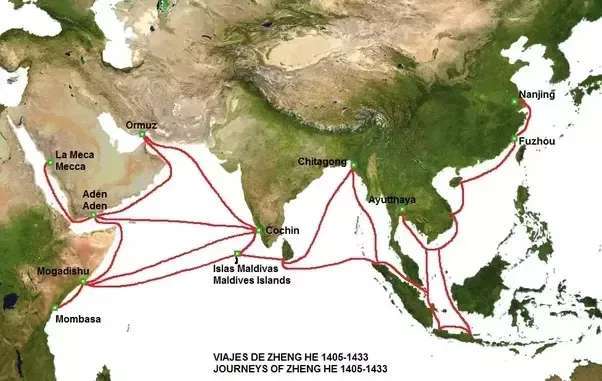
郑和——维基百科
土木堡的战败使这种可能性丧失了。
在土木堡,年轻的正统皇帝领导着规模远胜于蒙古的军队,对抗着蒙古的小规模而复杂的入侵。老实说,用“浩瀚”这个词也低估了中国理论上的优势:2万名蒙古人对阵50万名中国士兵。对中国来说这是个25:1的优势。
然而正统的军队却不知怎么的竟然输了。蒙古的胜利是彻底的:他们甚至抓住了正统皇帝本人。这场战役对明朝的破坏是不可估量的,尽管细节很复杂,但如果你有兴趣的话,这值得你去研究。虽然明朝并没有垮台,但对蒙古失败的反应部分导致了中国着名的“闭关政策”,因为资源被从探索转移到国防,特别是中国长城上。
必须指出的是,情况比这一单一事件要复杂得多。宫廷阴谋和其他同时期事件促使中国放弃了探索的冲动。这些覆没的军队里面很多在郑和之旅和土木之战之前都发挥着重要的作用。但由于对蒙古人的恐惧重新被唤起,长城的大部分遗迹得以重新建造,而且至少,这个极端的工程项目转移了大量的资源,而这些资源本来可能被用来使中国在大发现时代建立立足点的。
然而中国一个探索的时代,却差不多在欧洲伟大的探索时代刚刚开始的时候结束了。
到了1480年代,葡萄牙探险家将带领欧洲进入那片与郑和在几十年前就航行过的相同的水域。
明朝中国人对蒙古威胁的关注意味着当具有类似技术优势的欧洲人来到非洲和印度时,他们却在专注于造砖头,来建造这项艰苦而昂贵的历史上最大的土木工程项目。
其余的,就像他们所说的,成为了“历史”。
世界线从此改变。
悬崖峭壁上长城的一段
Geno Martinez, read some history books and played some historical games.
The Battle of Varna, the final battle of the Crusade of Varna, which happened on 10 November 1444, basically removed the last great opposition the Ottoman Empire had to expansion in Eastern and Central Europe, and directly led to the Fall of Constantinople mentioned by Gauri Noolkar. Its hallmark in history has been preserved notably in the videogames Crusader Kings II, where it marks the end of the medi time period you play through, and Europa Universalis IV, which starts the day after this battle.
King Władysław III of Poland had ascended to the throne of Hungary by promising Pope Eugene IV his aid in an anti-Turkish crusade, with the aim of pushing the Ottoman Empire out of Europe. So the Crusade of Varna began.
King Władysław III of Poland and Hungary
The Papal army had initially made good gains, with the forces led by the legendary John Hunyadi scoring victories at the Battle of Nish (1443) and the Battle of Zlatica, leading to an Ottoman withdrawal and a temporary peace treaty, the Peace of Szeged.
In November 1444, breaking the truce made with the Ottomans, the Papal Army, composed mainly of Hungarian, Polish, Bohemian and Wallachian forces, with a smattering of other armies from the Balkan states--20,000 to 30,000 strong in total, rapidly penetrated Ottoman territory, bypassing many strongholds.
They found themselves in Varna, near the Dardanelles Strait, which was being blockaded for the Crusaders by Genoese, Papal and Venetian fleets. There are conflicting accounts as to whether it was the Genoese or the Venetians who carried out the treachery, but what is true is that the 50,000 strong Ottoman army, led by Sultan Murad II, who had previously abdicated in favor of his son Mehmed II (later known as Mehmed the Conqueror), crossed the strait and were thus able to approach Varna from the west, trapping the Crusaders between the Black Sea, Lake Varna, the steep wooded slopes of the Franga plateau (356 m high), and the enemy.
Hunyadi led troops to defend the Crusaders' right flank against the Ottoman sipahis, and advised King Władysław to stay behind the lines and fight defensively. However, Władysław ignored this advice, and set out with 500 cavalry directly towards the Ottoman center, attempting to break through the elite Turkish Janissaries.
Unfortunately, he failed and was slain and beheaded. His head was mounted on a pole, which was displayed for all the Christian soldiers to see. The display had the intended effect and the Christian army routed and were virtually annihilated, removing the last great opposition to Ottoman expansion in Europe.
Władysław, King of Poland and Hungary, killed at the Battle of Varna.
The Ottoman victory of this battle, along with the Second Battle of Kosovo in 1448, deterred the rest of Europe from sending aid to Constantinople, which was eventually sacked in 1453. Had the Crusaders emerged victorious, they would have been able to continue their Crusade against the Turks and may have successfully pushed them out of Europe.
The Ottoman Empire would not have become as large as it did if it lost at Varna, while the Balkan States may have been greater than they were instead of being wracked by constant periods of war following the Ottoman encroachment on Anatolia and the Balkans. Greece could have been retaken, though it would perhaps be too optimistic to think that the Byzantine Empire could ever reclaim its former glory.
Ottoman Sultan Mehmed the Conqueror enters Constantinople.
瓦尔纳战役,瓦尔纳十字军的最后一场战役,发生在1444年11月10日,基本上消除了奥斯曼帝国在东欧和中欧扩张的最后一个强大的阻碍,并且直接导致了君士坦丁堡的陷落。它在历史向游戏《十字军之王2》中作为显着的历史标记,标志着中世纪时期的结束,而在《欧陆风云4》中,游戏的时间从这场战役的第二天开始。
波兰国王瓦迪斯瓦夫三世通过通过向教皇尤金四世承诺,他将帮助目的是将奥斯曼帝国赶出欧洲的反土耳其的十字军而获取了匈牙利的王位。
波兰及匈牙利国王瓦迪斯瓦夫三世
教皇军队最初取得了很好的成绩,传奇人物匈雅提率领的军队在尼什战役(1443年)和兹拉蒂卡战役中都取得了胜利,导致奥斯曼撤军和签署临时和平条约,缔造了“塞格德(匈牙利南部城市)之和”。
1444年11月,与奥斯曼人达成的停战协议被打破,罗马教皇军主要由匈牙利、波兰、波希米亚、瓦拉几亚和少量来自巴尔干地区的其他的军队组成——总共2万-3万人,他们绕开了许多据点,迅速深入奥斯曼的领土。
他们发现自己到了达达尼尔海峡附近的瓦尔纳,前者正在被热那亚人、教皇和威尼斯的十字军舰队封锁。关于到底是热那亚人还是威尼斯人背叛了十字军,有着互相矛盾的说法,无论如何,事实是由苏丹穆拉德二世——后来退位给他的儿子穆罕默德二世(后者后来被成为征服者默罕默德)率领的5万强大的奥斯曼军队得以越过海峡,从西部进入瓦尔纳,在黑海、瓦尔纳湖、弗兰加高原陡峭的树木山坡(356米高)和埃尼河之间困住十字军。
匈雅提率领军队保卫十字军的右翼抵抗奥斯曼精锐的西帕希骑兵,并建议国王瓦迪斯瓦夫三世留在后方,进行防守。然而,瓦迪斯瓦夫无视了这一建议,带着500名骑兵直奔奥斯曼军队中心,试图突破土耳其的精锐苏丹禁卫军。
不幸的是,他失败了,被杀并被斩首。他的头被挂在一根柱子上,让所有的基督教士兵都看到。这次展示取得了理想的效果,基督教军队士气溃败,几乎被全部消灭,消除了对奥斯曼在欧洲扩张的最后一次强烈反抗。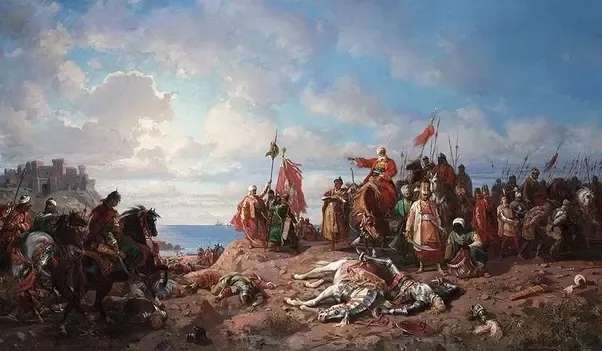
波兰和匈牙利国王瓦迪斯瓦夫在瓦尔纳战役中阵亡。
奥斯曼这次战役的胜利,加上1448年的第二次科索沃战役,阻止了欧洲其他国家向君士坦丁堡提供援助,使得君士坦丁堡最终在1453年被攻陷。如果十字军在这场战役中取得胜利,他们就能继续对土耳其人进行十字军征战,并可能成功地将他们赶出欧洲。
奥斯曼帝国如果在瓦尔纳输掉,它就不会变得像以前那样大,而巴尔干国家可能比以前更强大,而不是因为奥斯曼入侵安纳托利亚和巴尔干半岛战争的持续时间而遭受重创。希腊有可能会被从奥斯曼人手中夺回,不过,如果认为拜占庭帝国能重新获得昔日的荣耀,那可能太乐观了。
奥斯曼苏丹征服者穆罕默德进入君士坦丁堡
版权声明
我们致力于传递世界各地老百姓最真实、最直接、最详尽的对中国的看法
【版权与免责声明】如发现内容存在版权问题,烦请提供相关信息发邮件,
我们将及时沟通与处理。本站内容除非来源注明五毛网,否则均为网友转载,涉及言论、版权与本站无关。
本文仅代表作者观点,不代表本站立场。
本文来自网络,如有侵权及时联系本网站。
图文文章RECOMMEND
热门文章HOT NEWS
-
1
Why do most people who have a positive view of China have been to ...
- 2
- 3
- 4
- 5
- 6
- 7
- 8
- 9
- 10
推荐文章HOT NEWS
-
1
Why do most people who have a positive view of China have been to ...
- 2
- 3
- 4
- 5
- 6
- 7
- 8
- 9
- 10


